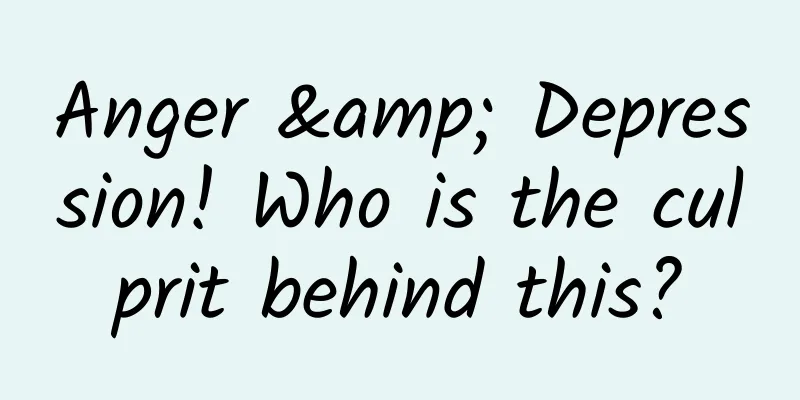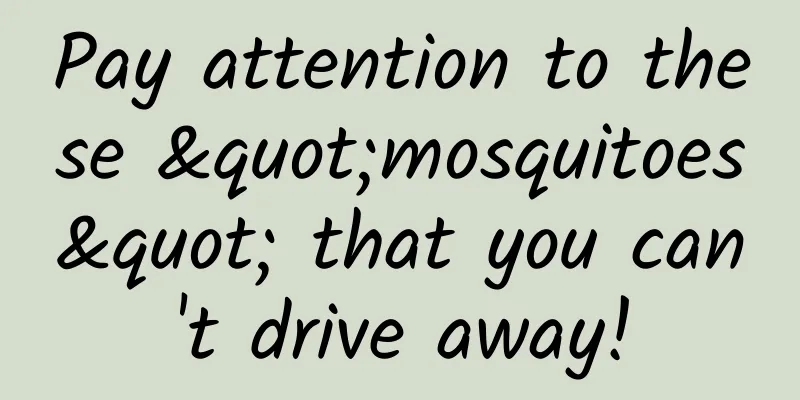Anger & Depression! Who is the culprit behind this?

|
Author: Zhao Xumao (Institute of Zoology, Chinese Academy of Sciences) The article comes from the Science Academy official account (ID: kexuedayuan) Joy, anger, sorrow, and happiness are all human emotions, and these emotions can bring great destructive power. For example, the "anger of the emperor" alone can cause "millions of corpses and thousands of miles of blood." And "depression" is also not ambiguous. According to statistics from the World Health Organization, one in every 20 people in the world suffers from depression! So what exactly is going on with anger and depression, and who is behind all this? Scientists have come to some conclusions by studying mice. Anger and depression (picture from the Internet) Angry: My territory must obey me! Anger seems to occur more often in male animals, not just in the human world, but in all higher male animals, most of them will be "angry". "Anger" is more often manifested in territorial behavior in animals, and territorial behavior is more obvious in males. What is domain behavior? Ecologists have had various interpretations of the term territory, such as "territory is an area defended by animals", "territory is an exclusive area of animals", "territory is a forbidden area that competitors are not allowed to enter", etc. However, some ecologists have a less strict interpretation of territory, believing that as long as the distance between animals (individuals or groups) is greater than the distance between them when they randomly occupy suitable habitats, they can be considered to occupy a territory. Territorial behavior, in simple terms, refers to the living space occupied by animals, where they allow themselves or family members to move around, but other "people" are not allowed to enter. If you don't listen and insist on intruding, it will "get angry". Many animals express anger in different ways: if provoked, Sichuan (Yunnan) golden monkeys will bar their teeth and glare at you, tigers will roar... Animal Rage (Picture from the Internet) Scientists at Stanford University in the United States were curious about the "source of anger" and began to study "where anger comes from". But in most cases, we have to sacrifice our mice when doing research. As a result of the study, scientists found anger-inducing neurons in the brains of mice, which were gathered in an area called the ventromedial hypothalamus VMH. This area can regulate hormones and control fear, appetite, and sexual desire. See, the area that controls appetite and sexual desire is located in the same part of the brain. The saying "food, sex, and sex" is completely scientifically based. The VMH area controls the "anger" of animals, which has long been confirmed in previous studies and is not a new discovery. However, the contribution of this group of experts is to "screen out 4,000 neurons involved in anger." If you are not engaged in scientific research, you don't know how hard it is. To screen out 4,000 cells involved in regulating anger from 80 million cells is like looking for a needle in a haystack. This is really a brain-burning process, of course, not only burning the human brain, but also burning computers, electricity, and money... Mice in an aggressive state (Image source: https://www.popsci.com/aggression-mouse-brain-nurture-nature) After finding the cells that control anger, it's time to witness the miracle. Experts have found that as long as these neurons are stimulated, mice will become angry, just like a button to control anger. When enraged, male mice will bite and drive away other male mice that enter their "territory" (domain), and even bite female mice. Even if the researchers put a toothbrush or a ruler in, it will still bite. What would happen if these angry mice entered the territory of other mice? Scientists conducted two more experiments: Experiment 1 A mouse living alone was provoked and thrown into a cage with other mice. As a result, it became furious and took over the other mice, biting and driving them away. This scared the "master" mouse because in the world of mice, it is rare for them to act wildly in someone else's territory. Experiment 2 This mouse lives with other mice and has established social relationships in their long-term coexistence. After being provoked, it will still get angry when a foreign mouse enters its territory. However, if it is placed in another cage and exposed to new companions, this mouse will be unusually calm and well-behaved! Community relations (picture from the Internet) why is that? This shows that social relationships keep mice calm. Mice that have established social relationships have learned that they must behave properly when entering other mice's territories. They can be angry, but they must restrain themselves and not show it, otherwise they will be beaten. Mice that live alone, however, do not have social relationships and do not know when they can and cannot be angry, and they will get angry once they are provoked. If these studies on mice can clarify the mechanisms that produce anger, they will also be useful for human research. Depression: Tug of War in the Brain For a long time, people believed that depression was a psychological problem. Now research has confirmed that depression is truly a brain disease that cannot be ignored. How depression occurs can be explained by the structure of the brain. There is a structure in the brain called the hippocampus. Below it is a part called the lateral habenula, which is an "anti-reward center" in the brain and a "bad organization" because all kinds of negative emotions, such as fear, anxiety and tension, are related to it. At the same time, there is also a "good organization" below the hippocampus - the monoamine nucleus, which is called the "reward center" and is the place where happiness is generated. The subtlety of the human body lies in the dynamic balance. If either side is too strong, it will be disadvantageous. The "good mechanism" and the "bad mechanism" check and balance each other. If the bad mechanism is too strong, negative emotions will be heavy and depression will occur. Similarly, it is not good for the good mechanism to be too strong, as that will easily create a happy 250. How do these two mechanisms work on a daily basis? The figure depicts the lateral habenula (the green part in the figure) and rats in two emotional states (image from http://www.bioon.com/biology/Class18/580933.shtml) In 2018, Hu Hailan's team from Zhejiang University in China revealed a special discharge mode of the lateral habenular nucleus and figured out the mechanism of depression: Normally, the "reward centres" and "anti-reward centres" both issue orders and control emotions through discharge. Under normal circumstances, these two organs discharge once, just like two people fighting, equipped with semi-automatic rifles, and evenly matched. For various reasons, the "anti-reward centre" suddenly upgraded its equipment and acquired a heavy machine gun. In this way, the "anti-reward centre" no longer discharges once, but instead discharges in clusters, so the "reward centre" is out of control. As a result, negativity takes over and depression occurs. The origin and treatment of depression (Image from the website of the Neuroscience Research Center of Zhejiang University) This research is also inseparable from the selfless dedication of mice. Scientists made the above discovery by comparing the responses of normal mice and depressed mice in the brain area. It is easy to find normal mice, but how to find depressed mice? In this case, the mice should be subjected to a "forced swimming" experiment: several mice are thrown into the water at the same time. Normal mice will struggle desperately and show a strong desire to survive. However, the depressed mice will show "behavioral despair" - giving up instantly and entering a state of suspension. The scientists then used optogenetics to induce cluster discharges in the lateral habenula of mice, which was equivalent to giving the "anti-reward center" advanced equipment. Then they threw the mice into the water, and the mice that were struggling to survive last time immediately lost all desire to live. So is there a drug that can relieve or cure depression? Of course. The cluster discharge of the lateral habenula depends on the most important excitatory transmitter glutamate receptor (NMDAR) in the brain. If there is a substance that can block the lateral habenula from using its big move - turning on the cluster discharge mode, killing the arrogance of the "bad organization", the enemy "good organization" will take effect, and depression can be alleviated. There is a drug, ketamine, which can work by blocking the cluster discharge of the lateral habenula, helping the "reward center" to deal with the "anti-reward center", thereby alleviating depression. However, there is also a big risk here, that is, ketamine is also the main raw material of K powder! However, the invention of ketamine came first, and its mechanism of action was understood later. In other words, when this drug was given to patients with depression before, they only knew that it worked, but as for why it worked, they didn't fully understand it (scientists are not drug makers!). Ketamine (Image source: https://baike.baidu.com/) Ketamine, as a drug, has great limitations in clinical use as an antidepressant. Scientists are still looking for and designing safer and more effective antidepressants. Currently, scientists have discovered several new drug targets in their research, hoping to develop better drugs. Having said so much, I’d better make some chicken soup to nourish the brain: students with bad temper should participate in more social activities, and acquired learning can suppress anger; students who feel depressed should do more happy things, so that the "reward center" in the brain will take the upper hand, and the "anti-reward center" in the brain will not be able to show off, and depression will be relieved. References: [1]https://www.popsci.com/aggression-mouse-brain-nurture-nature [2]Yang, Y., Cui, Y., Sang, K., Dong, Y., Ni, Z., Ma, S., & Hu, H. (2018). Ketamine blocks bursting in the lateral habenula to rapidly relieve depression. Nature, 554(7692), 317. |
<<: What are people thinking when facing fear and poverty?
Recommend
Why does shark meat stink? Can you eat sharks?
Sharks, which were called "sharks", &qu...
How to regulate uterine cold during pregnancy
For women, uterine coldness is harmful to their b...
How can walnuts be stored for the longest time? What is the best way to store raw walnuts?
Walnut has high nutritional value. Its roots, ste...
What are the symptoms of blood heat and uterine cold?
Most women have a cold constitution, which can be...
Can pregnant women eat clams? Are there any precautions for pregnant women to eat clams?
Flower clams are rich in nutrients such as protei...
Korea Statistics Office: As of October 2021, the number of food delivery workers in South Korea has risen to 428,000, a year-on-year increase of 9.7%
Data released by the Korea National Statistical O...
Can I eat broad beans during menstruation?
Menstruation is a very critical period for female...
Why can't we eat green mulberries (unripe mulberries contain more allergens and hyaluronic acid)
...
Is simple endometrial hyperplasia serious?
Female friends may not be very familiar with the ...
Symptoms of anemia in early pregnancy
Anemia occurs in many women because most women ha...
"The first fruit of winter", sweet and sour taste
This is the 4718th article of Da Yi Xiao Hu "...
How long does it take for ovulation to be normal after abortion?
Sometimes people have an abortion for health reas...
I haven't had my period for two months after the abortion.
The most direct way to terminate an unwanted preg...
Symptoms of chronic adnexitis
Chronic adnexitis is a common problem that affect...
What to do if you have gigantic breast disease
This is an era of beauty. In pursuit of beauty, p...






![[Doctors Talk about Medicine] Joint management of the three highs: How can general practitioners assist patients in the comprehensive management of blood pressure, blood lipids and blood sugar?](/upload/images/67f17c3f4420e.webp)


